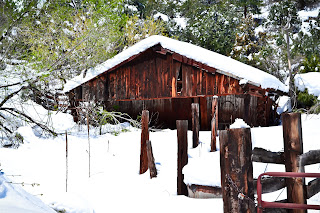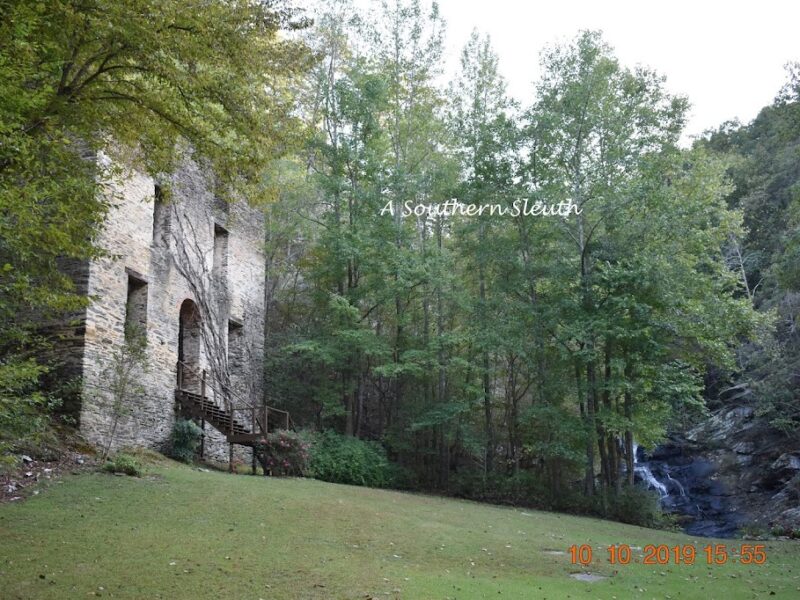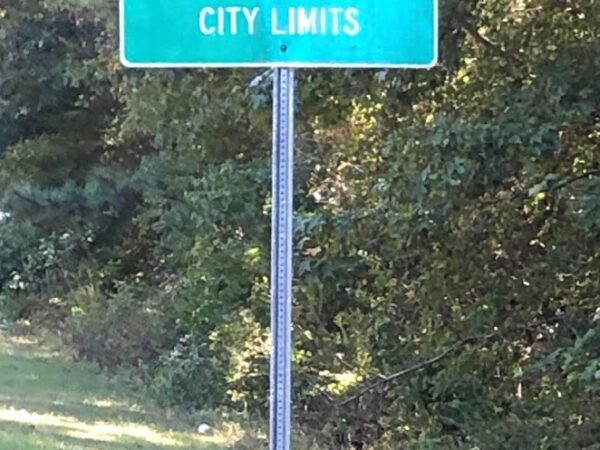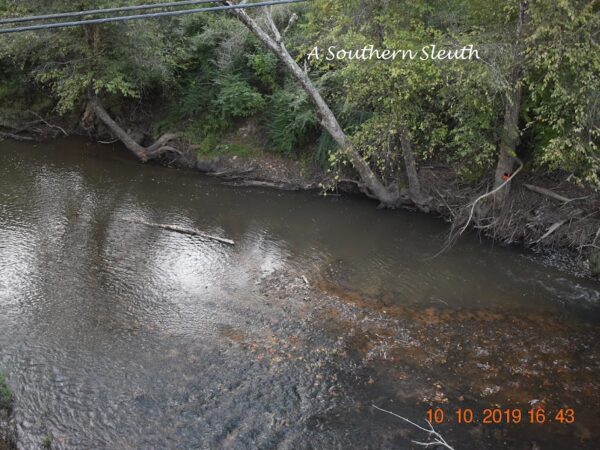
We had been driving for hours but finally, we began to recognize familiar landmarks and the nervous anticipation began. We loved visiting our relatives in the San Luis Valley in Southern Colorado. While we lived in California, our trips had been limited to the summer months, but after our family moved to West Texas, we decided to make the trip for Thanksgiving one year.
I looked out across the wide valley framed by majestic mountain ranges and was taken by how different everything looked in November. Fields that were filled with the green of alfalfa during the summer months now lay bare and covered by a thin layer of snow. Void of the tractors and baling wagons that dotted the fields during the summer, the empty fields had a certain peaceful silence about them, as if quietly resting for the season.
Finally, we pulled up to Grandma’s house and as we climbed out of the car, the brisk cold bit at our skin, indicating that our light jackets were woefully inadequate for the stinging cold of November in the San Luis Valley.
As I recently realized that my ancestors moved to Colorado that same time of year, I couldn’t help but reflect on my own experience and how unprepared we were for the cold there. Sadly most of the Southerners, including my ancestors, who arrived in the San Luis Valley in November of 1887 lacked clothing suitable for the cold they would experience.
As John and Olivia, along with their sons and their families, descended from the train in Colorado in November 1887, they truly began a new and very different chapter in their lives. Over fourteen hundred miles from their home in Georgia, they left behind those who opposed their beliefs and threatened their safety, but they also left behind beloved siblings, cousins, aunts, and uncles, as well as life-long friends. They left behind their culture, the land they had tended and farmed and of course their homes. They sacrificed it all for their religious beliefs.
Arriving in Colorado in November and on the brink of winter was a challenge on several levels. At an altitude of over 7,000 feet above sea level, San Luis Valley winters can be bitter cold and a very different winter from what the Southerners were accustomed to. In addition, the valley has a very short growing season and the Ganuses arrived well after the freeze and much too late to plant a garden or any crops for food. Although some who emigrated may have had funds to purchase food and supplies, many of the Southerners, including the Ganus family, had arrived in a state of poverty. The Ganus family had not even had enough money to purchase all of the train tickets needed for their entire family but had relied on the generosity of a friend, George Driver, who lent them $10.00 to buy the final ticket. It would be the generosity of strangers who would get them through the coming winter.
According to Emily Wells, a Manassa resident during that time, Manassa struggled as a community because of the number of Southerners who arrived in a state of poverty and ill-prepared for the cold climate. Nevertheless, the little farming community worked to help all those who were in need.(1) Undoubtedly the Ganuses were among those needing assistance.
In a dissertation entitled “Mormon Colonization of the San Luis Valley, Colorado, 1878-1900, Judson Harold Flower, Jr. wrote:
“Whatever the future prospects for Manassa, the prevailing poverty among the southern Saints arriving in the valley was a constant obstacle to the progress of the settlement, and one which could not be overcome solely by the injection of Mormon families from Utah into the community. Much credit for assisting the new arrivals through the first difficult months was due the Mexicans of the valley who rented homes, farms, seed and other materials and equipment to the newcomers arriving in their midst. (2)
Although I was unable to find a record of the weather for 1887, newspaper accounts for the following few winters often reported heavy snowfall and bitter cold. Train travel was frequently halted for days due to deep snow drifts, sometimes as deep as fourteen feet.
There were other difficulties that cropped up as well. Judson H. Flower, who did considerable research on the early settlement of the San Luis Valley, indicated that as the residents of the small neighboring towns interacted, there were sometimes issues between those from Utah and those from the South due to the differences in their culture. Many of those from Utah were from Scandinavian countries and consequently, English was not their primary language, making it easier to socialize with those who shared their native language and culture. The Southerners likewise had more in common with the other Southerners who had settled there. In addition, many of the American born Southerners found it irritating to receive constant instruction on everything from church matters to farming issues from those of foreign birth.(3)
As they worked through the various challenges, each new family in the community needed to find a way to work and contribute in order to make a living. Although the Ganus family had farmed in Georgia, John’s oldest son, Frank, was recorded as one of the early carpenters in Manassa and John’s other sons worked a lot for John Morgan, the Mission President they had previously known in Georgia.(4)
Despite the many adjustments and challenges for John’s family, there were many good things that occurred in that small community. Manassa was primarily a Mormon community, so they shared religious beliefs with most who lived there and no longer feared persecution. In addition, because there were so many Southerners in Manassa they found themselves among many who understood their traditions and shared their mannerisms and way of thinking.
In the Deseret News, November 5, 1887, referring to the San Luis Valley,
“There is in these towns a warm, delightful cordiality, a nearness of brother to brother, and a Gospel spirit of love and co-operation pervading the whole community, that is not met with in older towns. Every grasp of the hand sends a thrill to the heart, and is accompanied by a warm God bless you that speaks volumes of brotherly love. Two facts, we think, will explain this nearer approach to the Gospel ideal of society, the naturally warm-hearted, generous feeling of the southern people and all absence of caste caused by the mutual interdependence of all the settlers in their united battles against the difficulties of pioneer life.”
As is often the case, some folks felt the challenges were too great or they were simply enticed by the hope of finding something better and moved. A few families returned to Georgia and a few others chose to move elsewhere, although many remained in Manassa and the surrounding communities.
How was the Ganus family affected by the issues? The many challenges surely took a toll on them just as it did with others, but to what extent, we don’t know. What we do know is that they made Colorado their home for quite a few years, but by 1895, when William Franklin Ganus’ son, Homer Paul Ganus was born, the family was living in Oklahoma.This would be their final move and the final chapter for John and Olivia.
1. A Mormon “Widow” in Colorado: The Exile of Emily Wells Grant, page 180. Found online in PDF form.
2. “Mormon Colonization of the San Luis Valley, Colorado, 1878-1900,” a thesis presented by Judson Harold Flower, Jr., to Department of History at Brigham Young University, May 1966, p. 57
3. Ibid
4. A record included with information on the families living in Manassa in April of 1888. Digitized by J. Willard Marriot Library, University of Utah.
Copyright © Michelle G. Taggart 2017, All rights reserved




Surely John and Olivia knew it would be different and difficult arriving too late to plant. That just amplifies how frightened they must have been in Georgia.
I would think any farmer worth his salt would factor in weather and climate in a move. We are so accustomed to buying whatever we want any time of the year, I can't imagine moving to a relatively isolated part of the country with limited resources and just trusting that others would help you for the many winter months ahead. So, I agree—-fear provided a significant "push" for this family.
I had to laugh at myself reading this part of the story. I was on a rant about my village the other day because of parking issues. This certainly puts things in a different perspective! The context you have provided throughout these posts makes me almost feel as if I were there.
I also look at places and events "through the eyes of" my ancestors all the time since doing my family tree in earnest. I sometimes daydream what they would think of their hometown today. Great blog!